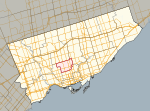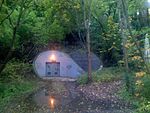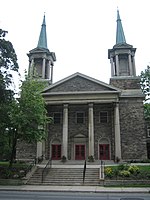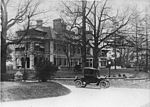Bishop Strachan School

The Bishop Strachan School (BSS; Strachan pronounced "Strawn") is an Anglican day and boarding school for girls in Toronto, Ontario, Canada. The school has approximately 900 students, including 80 boarding students, ranging from Junior Kindergarten to Grade 12 (approximately ages 4–18). The School is named after John Strachan, the first Anglican bishop of Toronto, and was founded by John Langtry in 1867. The founders' intention was to educate girls to be leaders.The campus is situated within the Forest Hill neighbourhood of Toronto. The main building was designed by Henry Sproatt. BSS Boarding welcomes Grade 8 to 12 students from Canada and around the world. The Senior School offers a wide range of courses in both traditional subjects and courses such as Media Arts and Design Technology. It offers Advanced Placement courses in some subjects.
Excerpt from the Wikipedia article Bishop Strachan School (License: CC BY-SA 3.0, Authors, Images).Bishop Strachan School
Lonsdale Road, Toronto
Geographical coordinates (GPS) Address Website External links Nearby Places Show on map
Geographical coordinates (GPS)
| Latitude | Longitude |
|---|---|
| N 43.6902 ° | E -79.4091 ° |
Address
Bishop Strachan School
Lonsdale Road 298
M4V 1X2 Toronto
Ontario, Canada
Open on Google Maps








